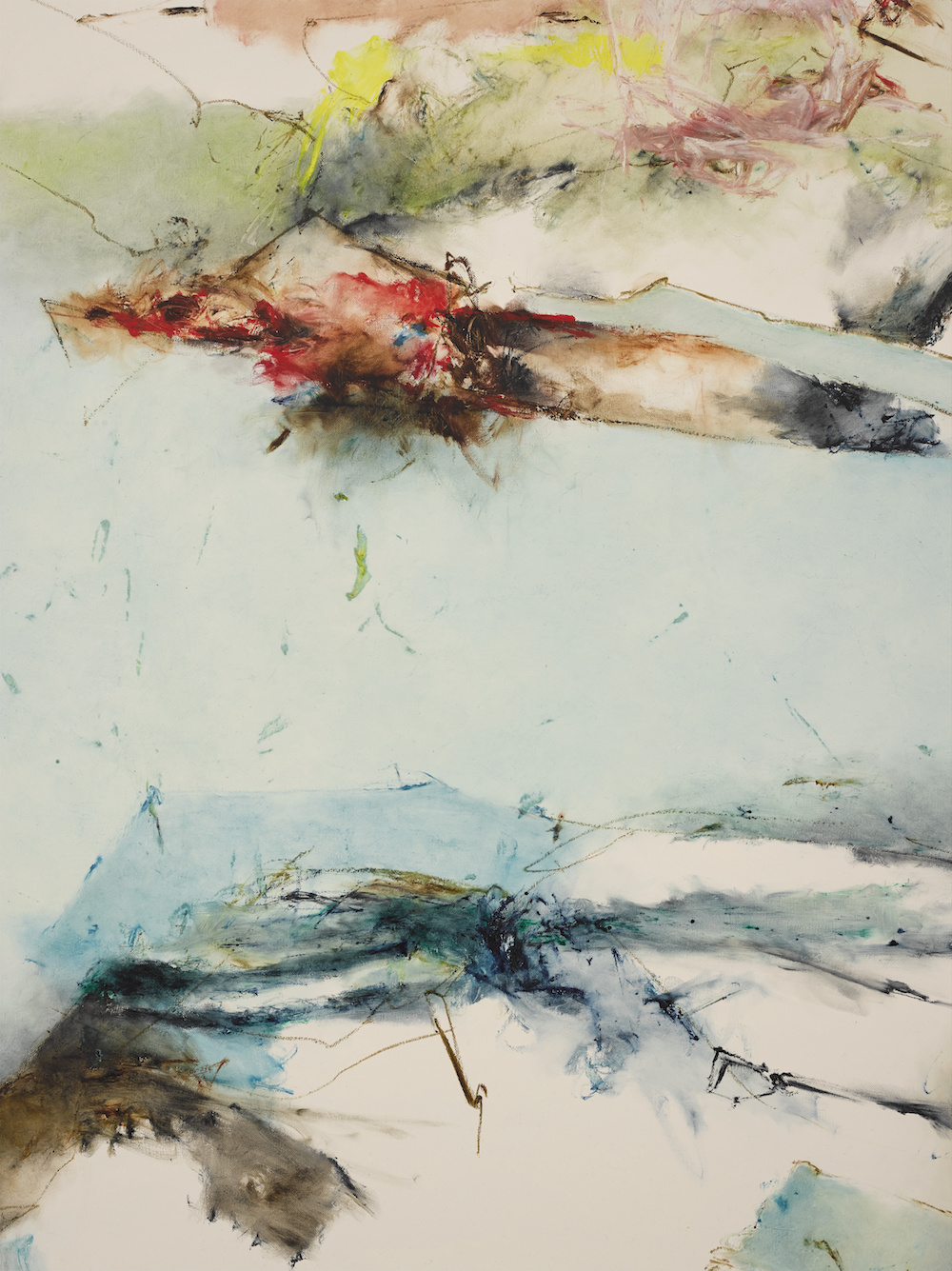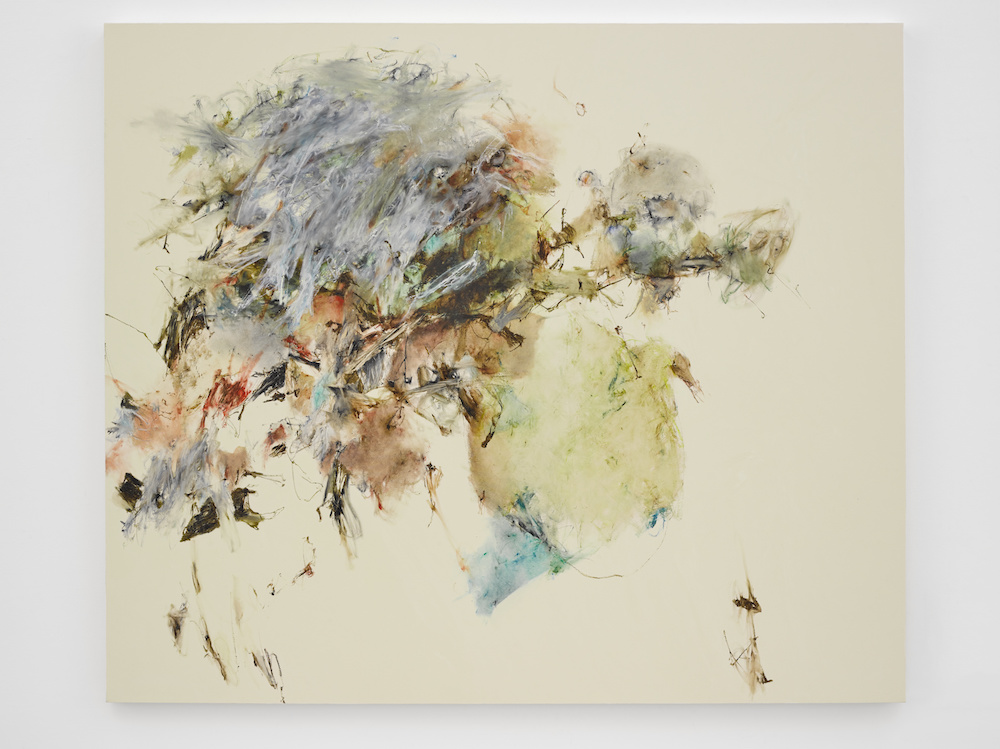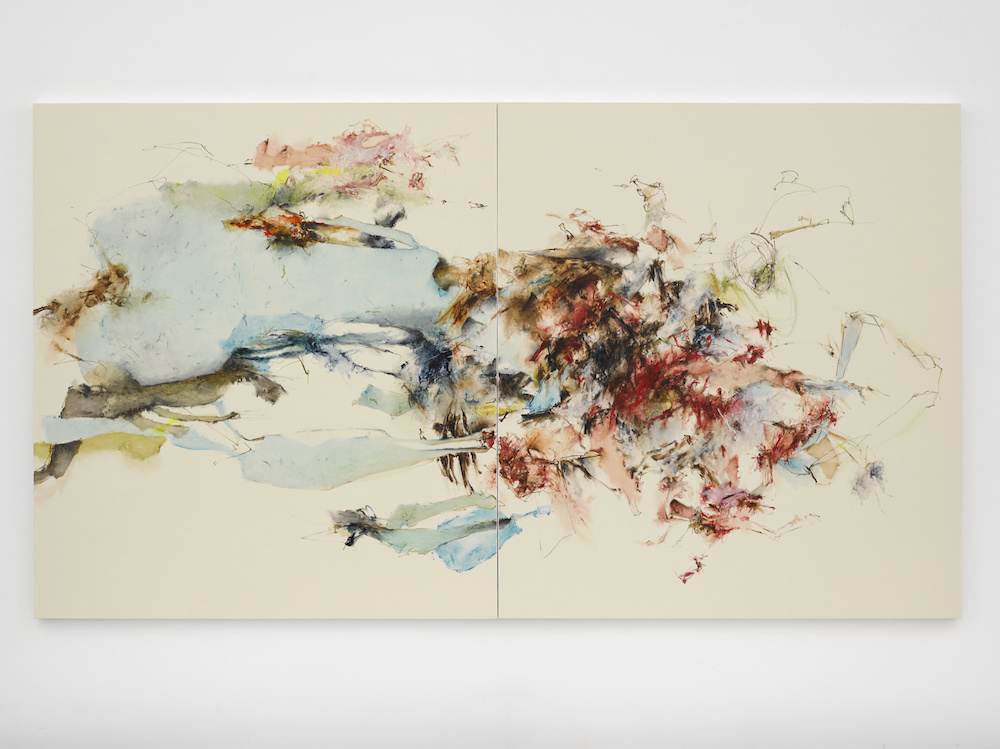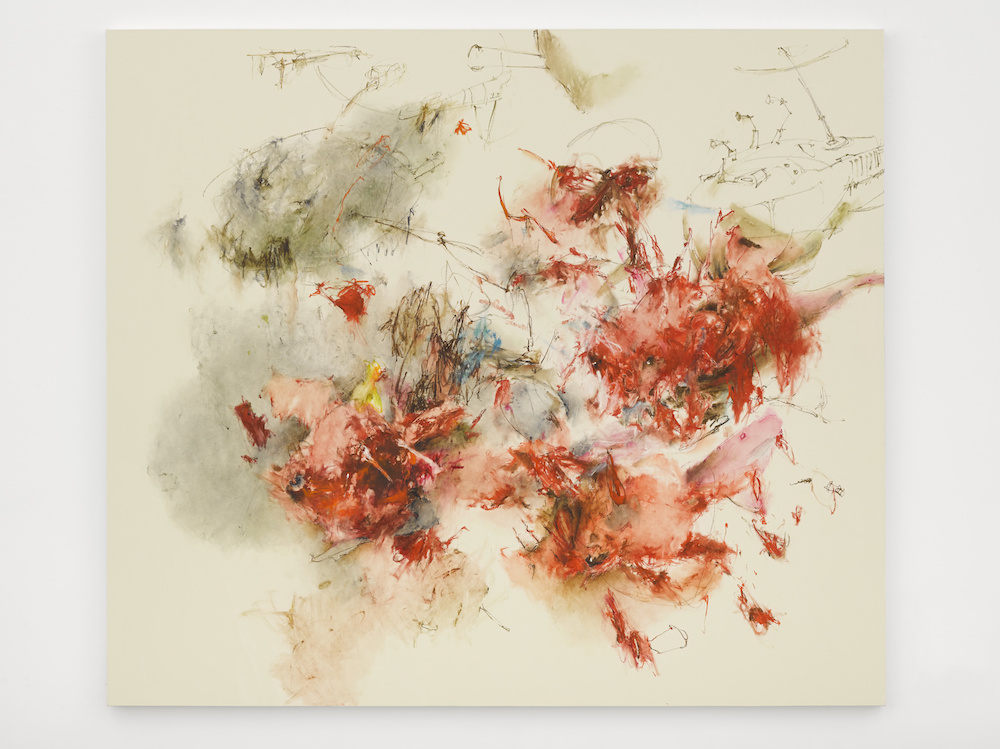This week White Cube has opened three shows in London which focus on practicing artists from Asia. As part of their ongoing Inside the White Cube series, the gallery have invited Indonesian artist Christine Ay Tjoe to their Bermondsey space.
I spoke to the artist earlier this week as the show opened, her first UK solo exhibition.
Can you tell me a bit about the work in this show?
It’s my view of human interest and how I perceive the human from different angles and different points, and also through my own barriers. There is this question of: what would people do if they were invisible? What power would they have? So there are the darker layers, which sometimes overlap, and are sometimes hidden. You can see in the depth of the work there are these layers which are seen and unseen. It’s how I see people merge in society; you see people and they look lovely but there are layers hidden underneath.
There are some animal forms coming through; especially fish. Do you see these as being symbolic for certain elements of the human?
Inherently there are animals within us, and different types of animals. It really depends how they’re cultivated as to how they take power over you. But it’s also about good and evil, even in the past, it’s been about our translation of what good and evil is. It’s a specific new body of work for this show, but it’s a continuation of my old theme of this fight within of good and evil.
Does good and evil feel complete within the human for you, or something that’s imbalanced?
People who are born into power have a tendency of cultivating these inner demons. Even in societies where people seem pleasant all the time, you can’t see these hidden demons. Sometimes they may act as though they are sincere but they have hidden motives and agendas and it feels as though in this modern society we’re heading that way. The work is also about how these inner demons intermingle with society and merge and become unseen or unspoken. Some of the paintings are very soft with pink hues and it feels very playful but if you look deeper you can see these layers. With the fish and the really red painting it’s more prominent. So the show really illustrates whether people have the power to hide or just show it.
What’s the starting point for a painting, are you quite controlled with where it goes?
It’s spontaneous. I start usually with three of four empty canvasses together and make a line with the oil bar. It doesn’t always have to be a line, sometimes I smudge it so it’s just colour and that’s how they really start. Usually when I see an empty canvas or a minor line it’s a trigger and everything that’s in my head gets thrown out there. I don’t have a photograph next to the canvas. I work almost in a trance.
So is it quite responsive to your own feelings or mood at the time?
Usually I brew the emotions and mood within me before I make work, so when I approach the canvas it’s about having the intention of making the best work without being distracted by any additional moods; but when I work on the canvas I can be triggered to develop that. But it’s not affected by daily moods or emotions. It’s a very long process.
There are some political roots, related specifically to Indonesia, do you feel the work takes on a slightly different meaning or connotation when it is shown somewhere like the UK?
I don’t feel there’s a contextual difference. Because we are global citizens, everyone has access to the internet, so it doesn’t make a difference in terms of that political identity; whether showing here or anywhere else. There’s a thing in the Asian culture of always being pleasant, and polite and not wanting to confront. So there are always things brewing. But we were talking to a British curator and actually he said it’s the same here.
You studied graphic art. What made you transition over to paintings and do you still feel your work is heavily influenced by graphic art?
I identify a lot with graphic art within my practice still, but I felt at the beginning there were a lot of constraints within graphic art on its own, with the paper being too thin, colours, using a printer. I moved to the canvas because I felt I could be more free in expression in my work. I feel there’s a lot more freedom in the canvas than in the paper and using graphic art but I do still identify a lot with it. I use the needle, the line. There are all these techniques from graphic art which I wish to expand and develop further in the future. Things like dry point, when to press hard, medium and soft.
What are you inspired by?
Lots of inspirations come from how I perceive the way that I should be and live. Also from the Dalai Lama, from the spiritual world. There’s also a German graphic artist named Horst Janssen who I look up to a lot, and I feel I can identify with him in terms of being a practicing graphic artist and an artist at the same time. To have that confidence and be able to explore outside the boundaries.
‘Christine Ay Tjoe: Inside the White Cube’ is showing at White Cube Bermondsey until 11 September









